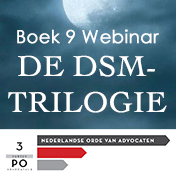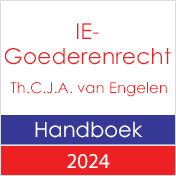
Zaak C-501/15 P: EUIPO v Cactus. Conclusie A-G Wahl
Merkenrecht. Hogere voorziening ingesteld door het EUIPO tegen een arrest (IEPT20150715) waarin het GEU het beroep tegen een beslissing van de oppositieafdeling van het EUIPO toewees voor zover was geoordeeld dat een aantal diensten uit klasse 35 (detailhandel van o.a. planten, bloemen en granen) niet onder de reikwijdte van merk CACTUS vallen en dat geen sprake was van normaal gebruik voor de klasse 31 (bloemen, planten en granen). De A-G concludeert tot afwijzing van het beroep. De A-G stelt dat EUIPO haar beroep instelt op twee gronden. De eerste grond, die inhoudt dat het Gerecht ten onrechte ten onrechte heeft aangenomen dat klasseaanduiding 35 alle onder die klasse genoemde diensten omvat, moet volgens de A-G onder onderstaande redenen (zie overweging 57 en 64) worden afgewezen. Ook de tweede grond, die inhoudt dat het Gerecht ten onrechte heeft geoordeeld dat het gebruiken van een beeldelement (dat een cactus weergeeft) zonder het woordelement (het woord cactus) geen invloed heeft op het onderscheidend vermogen van het merk zoals geregistreerd, dient volgens de A-G te worden afgewezen (zie overweging 76 t/m 82).
“57. As Advocate General Campos Sánchez-Bordona pointed out in Brandconcern, there is an important difference between the two stages of application for and registration of trade marks. The interpretation of the list of goods and services contained in an application may still be amended in accordance with Article 43 of the Trade mark regulation. That is not the same as the interpretation of the list of goods and services covered by a trade mark which is already registered. Pursuant to Article 48 of the same regulation, a registered trade mark is, as a matter of principle, unchangeable. To accept that a subsequent statement of the Court concerning trade mark applications has a bearing on the protection afforded by previously registered trade marks would undermine the stability of such trade marks. It would also be contrary to the principle of legal certainty and frustrate the legitimate expectations of trade mark owners.
64. On the basis of all the above, I consider that it was without committing an error that the General Court held that the designation of the class heading of Class 35 covered all the services included in that class, including services consisting of the retail of goods. Accordingly, the first ground of appeal must be dismissed as unfounded.
76. Nevertheless, the case-law does not provide clear guidance on how it is to be assessed whether the use of a trade mark in an abbreviated form alters the distinctive character of the registered trade mark. That case-law deals mostly with somewhat different configurations concerning, in particular, the addition of new conceptually distinct elements to the registered trade mark (or the use of the trade mark in an altered form). In that context, the General Court routinely considers that a finding of an alteration of the distinctive character of the mark as registered requires an assessment of the distinctive and dominant character of the elements added, carried out on the basis of the intrinsic qualities of each of those elements, as well as of the relative position of the different elements within the arrangement of the trade mark.
77. This appeal raises the question whether that is equally true where elements are omitted.
78. In my view, the answer to that question depends on the circumstances of each individual case.
79. Let us assume that Cactus had registered a figurative trade mark composed of two elements: a figurative element depicting a rose and a word element ‘Cactus’. Let us also assume that Cactus had employed only the figurative element depicting a rose in exploiting the figurative trade mark in its commercial operations. In such circumstances, the distinctive and dominant character of the element omitted would have to be assessed in order for the impact of the omission on the distinctiveness of the trade mark as registered to be determined. That is, in essence, because of the conceptual dissonance between the figurative element and the word element which comprise the registered trade mark. Indeed, in such a situation, the omission of one of the elements may have a bearing on distinctiveness.
80. The situation is different here. The figurative element (the stylised cactus) and the word element (Cactus) refer to the same concept. Although I am doubtful whether it is correct to say that a logo and a word element have the same semantic content, as the General Court did, that does not alter the fact that the element omitted is conceptually equivalent to the figurative element which is used.
81. Despite the General Court not having declared its intention of conducting a global assessment of equivalence, it is clear to me that it did so in the contested paragraph of the judgment under appeal. Indeed, it compared the trade mark as used (stylised cactus) to the trade mark as registered (stylised cactus and the word element). It is that global assessment of equivalence that allowed it to conclude that the two marks were essentially equivalent. As Cactus points out, where the elements in question are conceptually equivalent, the distinctive character of the word element Cactus cannot be different from that conveyed by the figurative element of the trademark. In such a situation, examining separately the distinctiveness of the word element omitted would be superfluous.
82. For that reason, the General Court was right to hold that the use of the stylised cactus alone without the word element ‘Cactus’ does not alter the distinctive character of the earlier figurative trade mark. Accordingly, I am of the view that the second ground of appeal should be dismissed as partly inadmissible and partly unfounded.”
Lees de conclusie hier.



























































